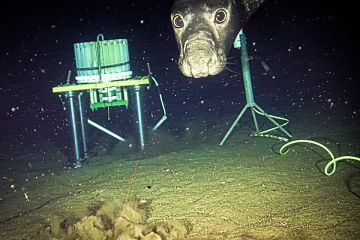
2025 Distinguished Alumni Award recipients
Environmental sustainability, clean technology and Inuit rights highlighted in this year’s group of remarkable grads.

Environmental sustainability, clean technology and Inuit rights highlighted in this year’s group of remarkable grads.

The “lək̓ʷəŋən (Lekwungen) Paddle” was received by Commonwealth Sport President Chris Jenkins during an official handover ceremony held at Canada House.

CIFAL Victoria is part of a global network but it’s through a local network—of First Nations, academics and emergency preparedness experts—that’s it’s aiming its latest efforts at producing impactful solutions that transcend boundaries.

From exciting and impactful research discoveries to inspiring recognition and partnerships, the University of Victoria (UVic) community continues to demonstrate our commitments to working together towards a brighter future for all, year after year.

Thanks to a groundbreaking partnership in Brazil, UVic is extending its global reach and its impacts on environmental education beyond Canada’s borders while expanding ideas of who benefits from formal education.

UVic’s Division of Continuing Studies is issuing micro credential certificates for UNICATA students who complete learning modules.

University of Victoria (UVic) microbiology graduate Shaeleen (Shae) Mihalynuk is bound for England, having been named as the province’s Rhodes Scholar for 2025. Mihalynuk is one of 11 young Canadians, and the only one in BC, chosen for the prestigious scholarship, which provides two fully funded years of post-graduate studies at England’s Oxford University.

For Shaeleen (Shae) Mihalynuk, there are three things in life that matter most: community, health and joy. There has certainly been joy in Mihalynuk’s life recently. On Nov. 18, the microbiology alumna was announced as BC’s Rhodes Scholar for 2025.

Ahead of World AIDS Day on Sunday (Dec. 1), read more about the good work of four researchers in the Faculty of Human and Social Development.

In a new Nature study, led by the University of Oxford’s Department of Physics and published today, an international group of authors who developed the science behind net zero demonstrate that relying on “natural carbon sinks” like forests and oceans to offset ongoing CO2 emissions from fossil fuel use will not actually stop global warming.

Prior to arriving at UVic, Sie Douglas-Fish had never even left their 2,000-person hometown before—but now, as they graduate with a BFA in Visual Arts, they’re not only already living and working in a city of 4.2 million but also had their art featured on national TV and have a piece hanging in the Montreal offices of Amazon Web Services.

Long-time photographer and artist, Graydon Smith, found inspiration in UVic’s visual anthropology graduate program. He graduates this fall with a master’s degree in anthropology. “I was first drawn to study anthropology as I was in…

University of Victoria experts are available to media to discuss United Nations Sustainable Development Goals as the international community gathers for the UN Summit of the Future.

Landmark new research shows Ice Age teens from 25,000 years ago went through similar puberty stages as modern-day adolescents. In a study published today in the Journal of Human Evolution of the timing of puberty in Pleistocene teens, researchers are addressing a knowledge gap about how early humans grew up.

People across Canada came together to help one another during recent climate disasters, and now Neworld Theatre is bringing those true-life stories to the stage. Eyes of the Beast: Climate Disaster Survivor Stories is the first full-length documentary theatre production based upon on-the-ground climate disaster reporting and will have its world premiere at the UVic's Phoenix Theatre from Sept. 16-21.

Northern elephant seals were repeatedly captured on camera in the deep Pacific Ocean using sonar from an Ocean Networks Canada (ONC) observatory as a dinner bell to forage for their next fish feast, according to a new study led by University of Victoria researchers.